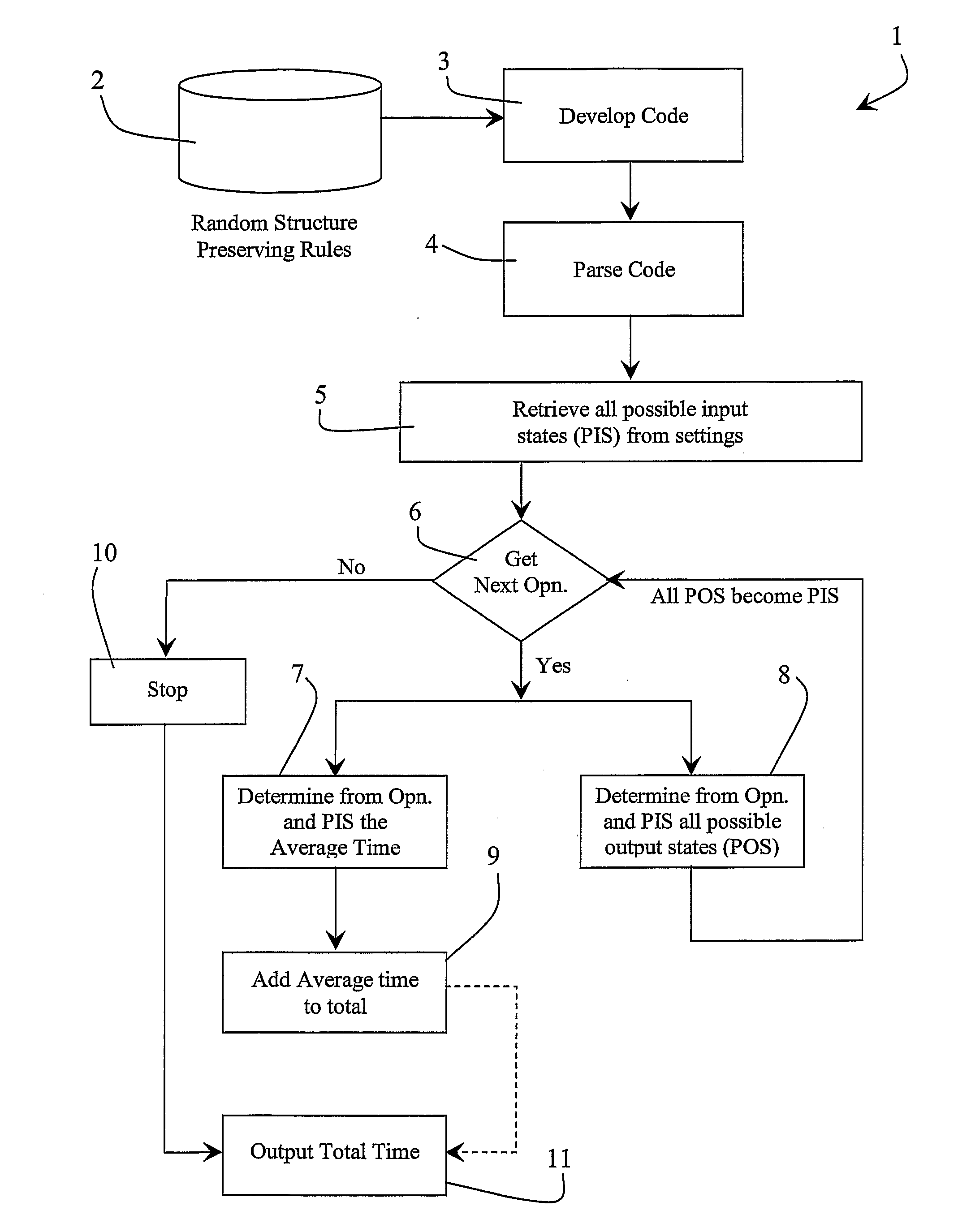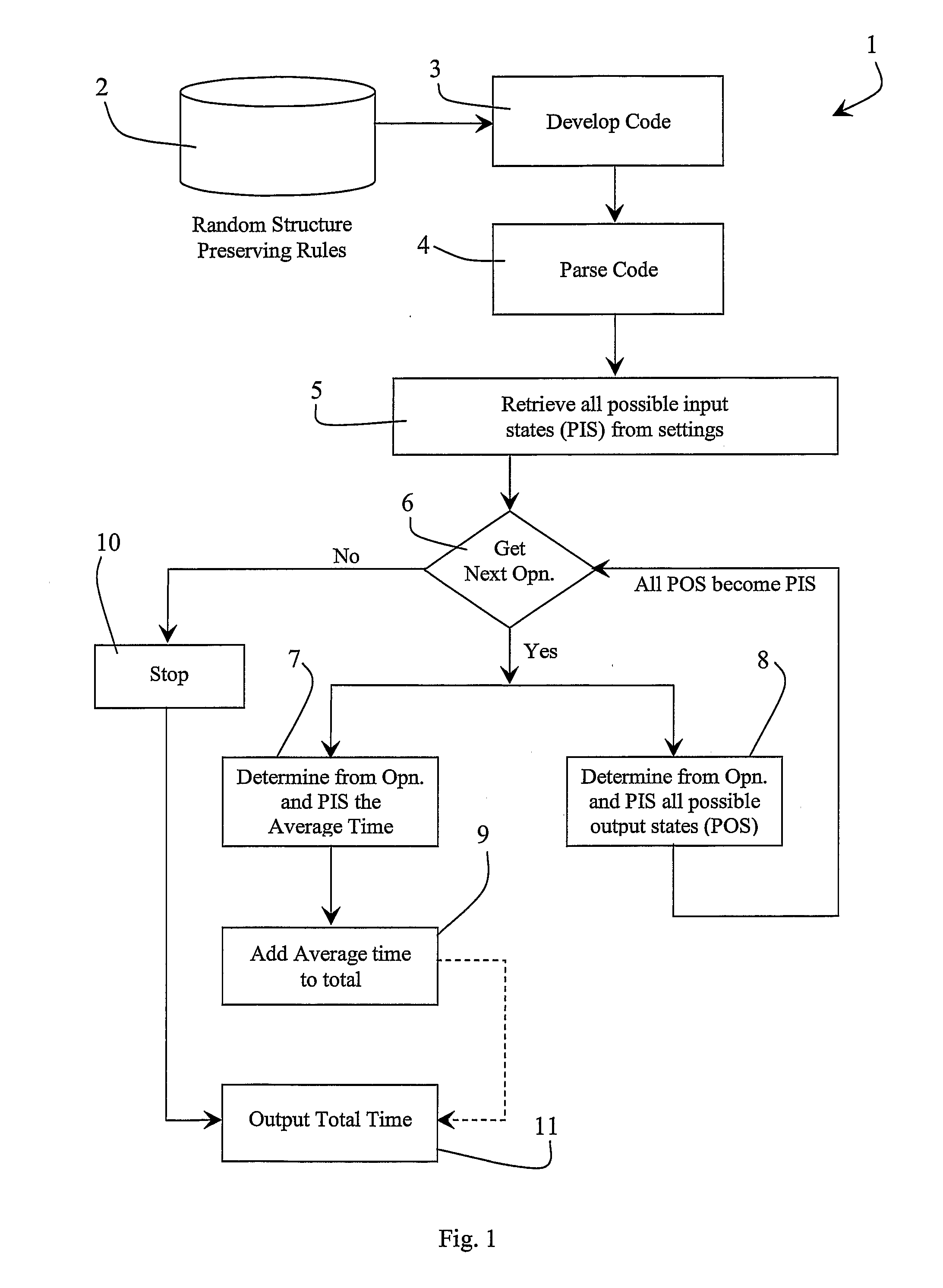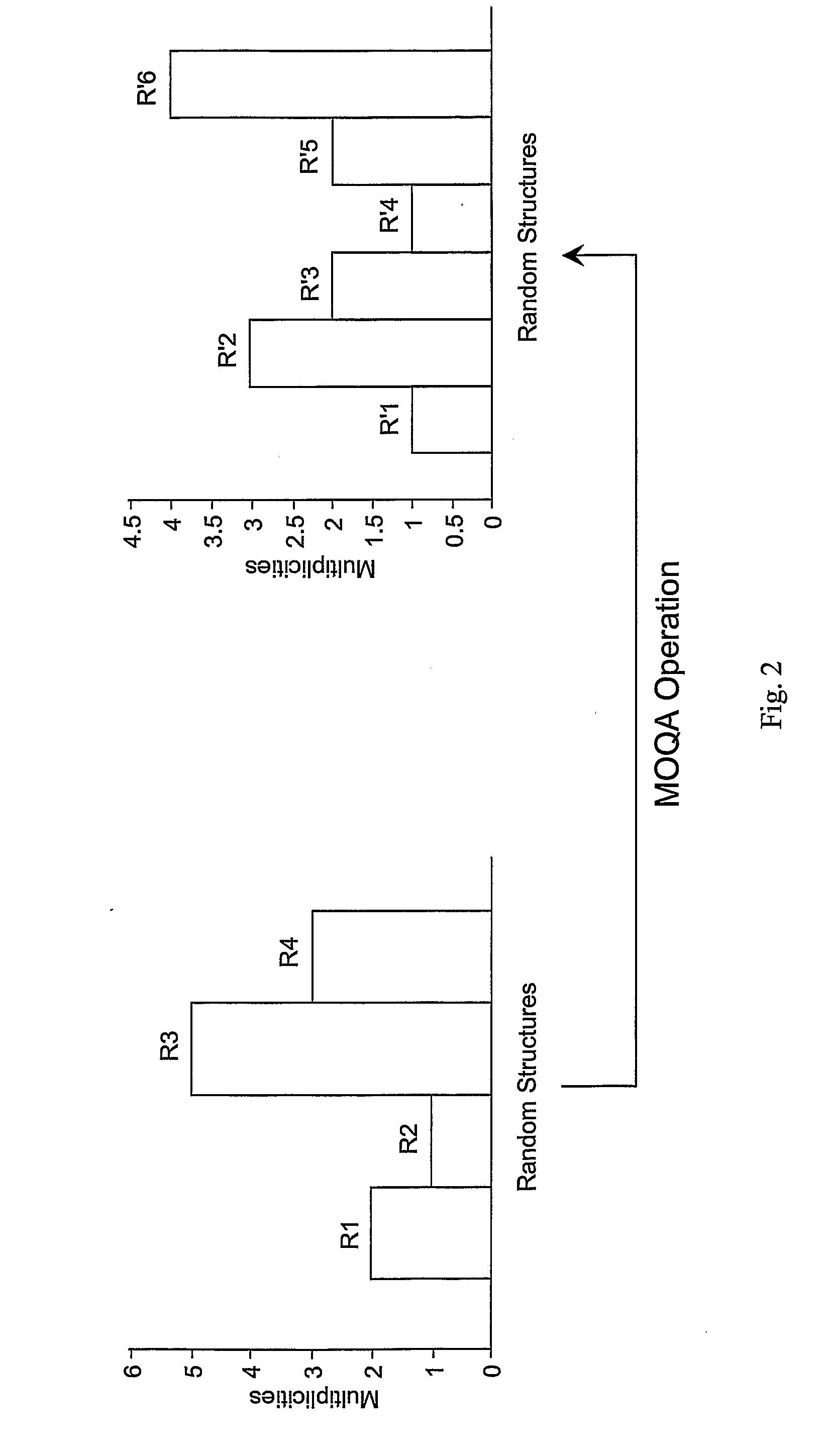Method For Developing Software Code and Estimating Processor Execution Time
a software code and processor technology, applied in the direction of program control, electric digital data processing, instruments, etc., can solve the problems of not fully automating the process of generating the wcet, and current software technology does not provide for determining all possible states data
- Summary
- Abstract
- Description
- Claims
- Application Information
AI Technical Summary
Problems solved by technology
Method used
Image
Examples
projection examples
[0116]Examples of the projection operatin are illustrated in FIG. 5.
Delete
Delete Definition
[0117]The delete operation is not always as simple or as intuitive as its name suggests. Delete is defined in terms of the entire finite partial order (X,) and in terms of a strict subset of the finite partial order (X,). Both definitions are similar but there is a subtle but significant difference between them that motivates the following two separate definitions so as to prevent the asymmetry between them going unnoticed.
Delete Over Entire Partial Order
[0118]The delete operation over an entire partial order is defined as follows:[0119]A single element is removed from the partial order (X,). The element to be removed is not actually specified as a parameter for delete. Rather the element to be removed is implied by reference to the label value it is attached to in the particular labeling. However, it is not the actual value of the label that is specified but the relative position of the label...
example 6
COUNTER-EXAMPLE 6
Worst-Case Time
3.3 Average-Case Time is IO-Compositional
[0220]Proposition 7 The average-time measure is IO-Compositional, i.e. the following equality holds for any two data structure operations P1, P2, where P1 operates on an input multi-set I and produces the output multi-set :
TP1;P2(I)= TP1(I)+ TP2(OP1()).
Proof:
[0221]T_P1;P2(ℐ)=∑I∈ℐTP1;P2(I)ℐ=∑I∈ℐTP1(I)+∑J∈P1(ℐ)TP2(J)ℐ=T_P1(ℐ)+T_P2(P1(ℐ)),
[0222]where the last equality follows from the fact that ||=||.
4 Random Structures
[0223]We introduce a formalization of the notion of a Random Structure. This formalization is new and will serve as a basis for the data structures. As mentioned in the previous section, a Random Structure can also be viewed as a formalization of a “uniformly distributed data structure” obtained through identification up to order-isomorphism.
[0224]We will define a Random Structure (Definition 10) as a set of labelings on a finite partial order. One could develop the theory in the more general conte...
example 12
[0242]In each part of the example, we display the Hasse Diagram of the given partial order on the left and the labelings on the right. In each case the underlying set consists of elements {}, while the labels are the set of indices {1, . . . ,η}. Part c) illustrates that random structures incorporate the case of lists in a natural way.
[0243]The random structure (X,) consists of the labelings F1 and F2, where:
F1={(1,1),(2,2),(3,3)} and F2={(1,1),(2,3),(3,2)}.
[0244]The random structure (X,) consists of the labelings F1 and F2, where:
F1={(1,1),(2,2),(3,3),(4,4)} and F2={(1,1),(2,3),(3,2),(4,4)}.
[0245]c) Consider the partial order (X,) over the set {} equipped with the discrete order, i.e. and . The random structure (X,) consists of all η! permutations of labels on the elements of X and can be interpreted as the set of lists of size η. We will denote in the following such a random structure by where stands for “Atomic”.
[0246]d) Consider the partial order (X,) over the set {} equipped...
PUM
 Login to View More
Login to View More Abstract
Description
Claims
Application Information
 Login to View More
Login to View More - R&D
- Intellectual Property
- Life Sciences
- Materials
- Tech Scout
- Unparalleled Data Quality
- Higher Quality Content
- 60% Fewer Hallucinations
Browse by: Latest US Patents, China's latest patents, Technical Efficacy Thesaurus, Application Domain, Technology Topic, Popular Technical Reports.
© 2025 PatSnap. All rights reserved.Legal|Privacy policy|Modern Slavery Act Transparency Statement|Sitemap|About US| Contact US: help@patsnap.com



